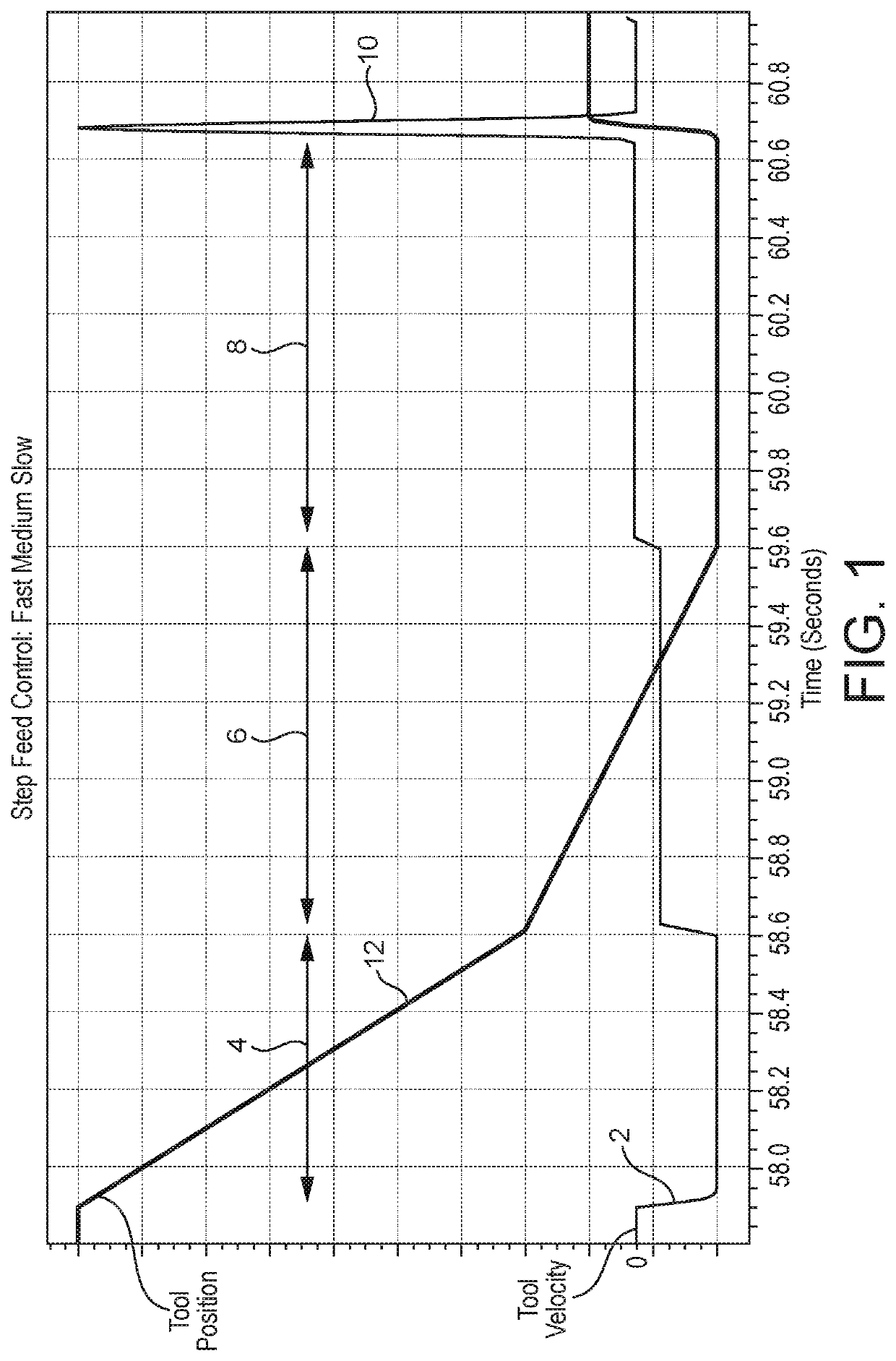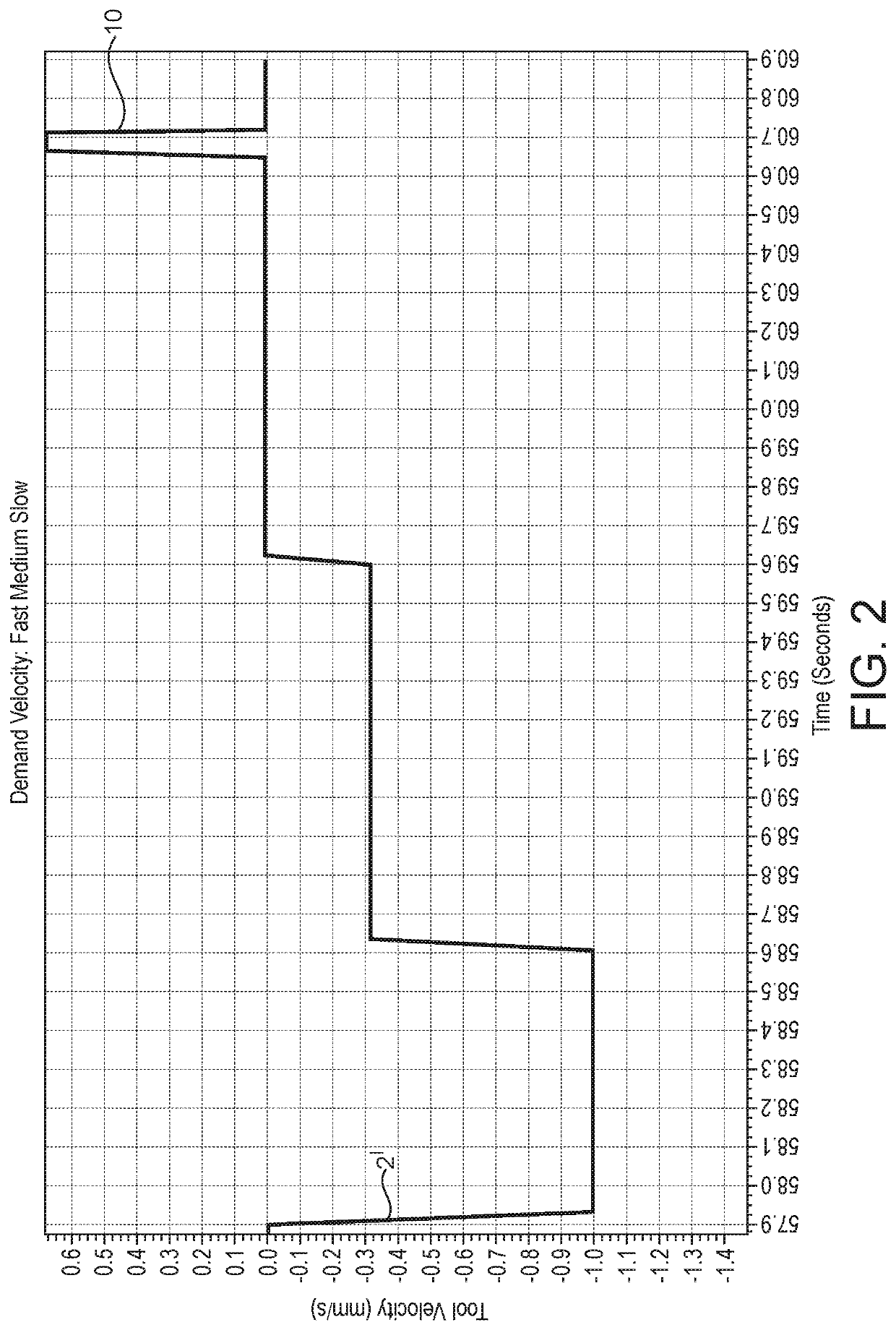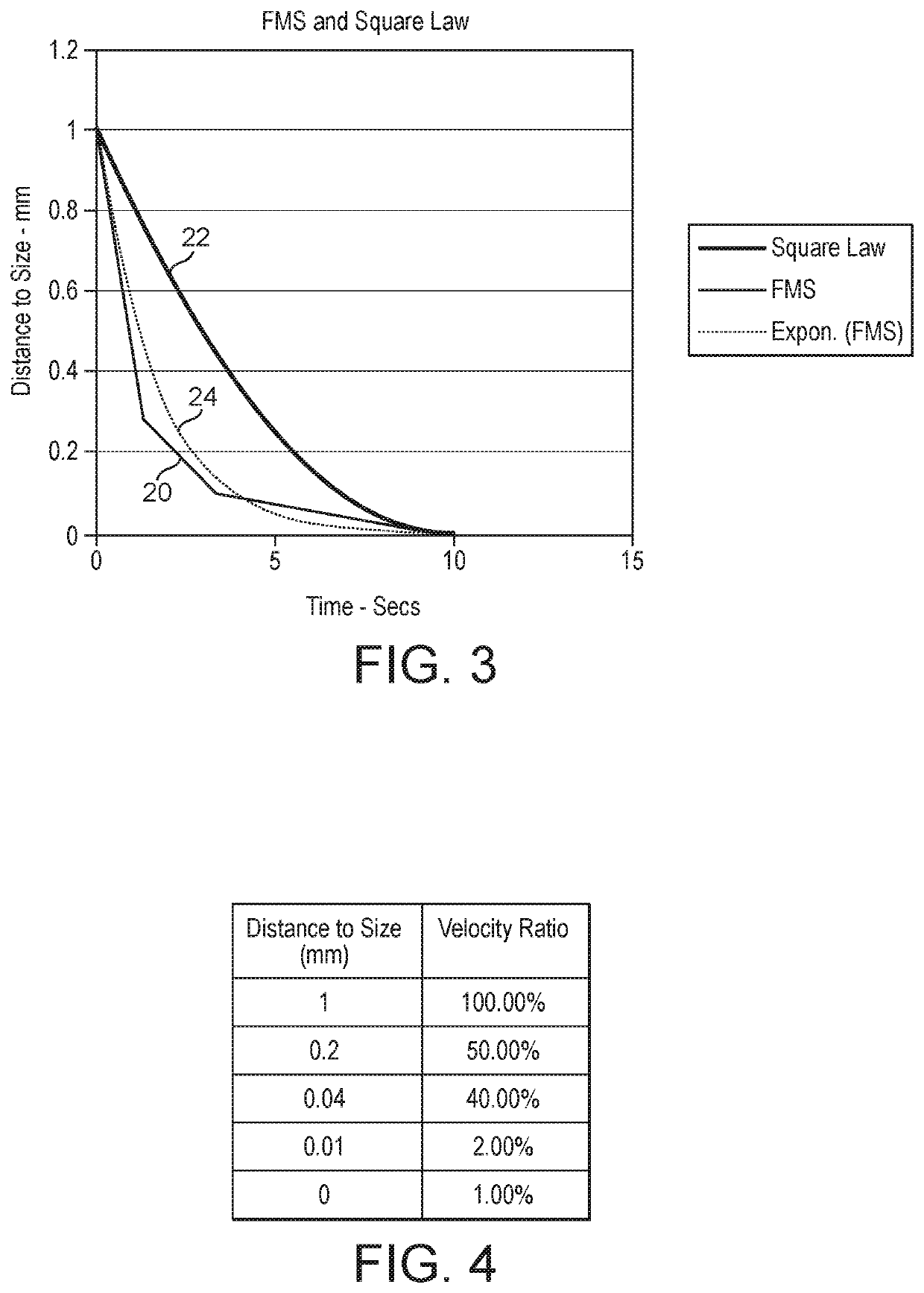Improvements to machining process control
a technology of machining process and control, applied in the direction of program control, electric program control, instruments, etc., can solve the problems of sudden bursts in grinding power, machining errors, and add to the overall time taken for the workpiece to be machined to its finished siz
- Summary
- Abstract
- Description
- Claims
- Application Information
AI Technical Summary
Benefits of technology
Problems solved by technology
Method used
Image
Examples
Embodiment Construction
[0052]FIGS. 1 and 2 illustrate a known machining operation using phase-by-phase piecewise feed control. FIG. 1 shows a plot 2 of tool velocity relative to the is workpiece against time. It includes three distinct phases 4, 6 and 8 corresponding to “fast”, “medium” and “slow” feed rates, respectively.
[0053]FIG. 2 shows the same machining operation in which a portion 2′ of the tool velocity plot 2 is shown with a larger scale on the vertical axis. In FIG. 2 (and other similar figures), negative values of tool velocity on the y axis represent movement towards the workpiece, with positive values representing movement away from the workpiece. Feature 10 is a spike in the plot corresponding to a short controlled retraction of the tool from the workpiece surface to avoid microscopic surface finish defects in advance of a rapid retraction and movement of the tool to the next workpiece portion to be machined. The magnitude of the tool velocity towards the workpiece during the slow feed phase...
PUM
| Property | Measurement | Unit |
|---|---|---|
| velocity | aaaaa | aaaaa |
| feed velocity | aaaaa | aaaaa |
| feed velocity | aaaaa | aaaaa |
Abstract
Description
Claims
Application Information
 Login to View More
Login to View More - R&D
- Intellectual Property
- Life Sciences
- Materials
- Tech Scout
- Unparalleled Data Quality
- Higher Quality Content
- 60% Fewer Hallucinations
Browse by: Latest US Patents, China's latest patents, Technical Efficacy Thesaurus, Application Domain, Technology Topic, Popular Technical Reports.
© 2025 PatSnap. All rights reserved.Legal|Privacy policy|Modern Slavery Act Transparency Statement|Sitemap|About US| Contact US: help@patsnap.com



